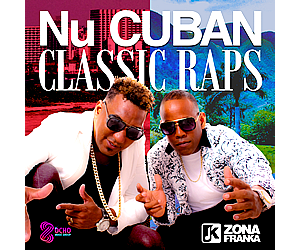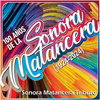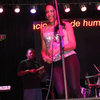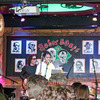Indice - Table of contents
Lo Nuevo [hide]
Tienda : Test Page 20250825
Reportes : From The St... : Page 1a
Reportes : From The St... : Page 1
Resenas : Test Review MPL
Resenas : Test revew
Musicos : New Musician
Fotos : Tom Ehrlich : test subpage
Fotos : Tom Ehrlich : test 3
Fotos : Michael Lazarus : MPL - New Gallery 1
Tienda : Methods · Métodos
Musicos : Juan Formell
Musicos : Yordamis Megret Planes
Musicos : Yasser Morejón Pino
Fotos Del Día [hide]
The Roots of Timba - Part II - Transition to Tránsito
The next two Los Van Van singles were released simultaneously, probably in tandem with the second album. Our current best theory is that Los Van Van, Vol. II, aka Tránsito, was recorded in Spain in 1974, and that the next two singles below were drawn from those recordings, but that the earlier singles -- Pero a mi manera, Pero que falta de respeto and Ponte para las cosas -- were recorded in Havana first, and then re-recorded a year or two later in Spain for the album. This is definitely true for Pero a mi manera and Pero qué falta. When we find out for sure about Ponte para las cosas, I'll re-write this section.
1974 Los Van Van - Ana (EPA-6472A)
xx0x 0xxx 0xx0 xxx0 2-3 rumba clave
Kxxx xxKx Sxxx xxKx kick and snare
0xx0 xx0x x0x0 x00x audio example -- MIDI example
bass: Juan Formell - drums: Changuito (José Luis Quintana)
source: Los Van Van, Vol. II
notes: Ana's bass tumbao is another combination of North American harmonic flavor and a typical songo bass tumbao rhythm. Less typical, however, is Changuito's kick and snare pattern, which could be thought of as a rock beat in half time, or as a precursor of the "snare-on-the-front-beat" style Changuito frequently used in his rhythm section arrangements for Pupy y Los Que Son Son 30 years later:
Pupy y Los Que Son Son - 2001 - La bomba soy yo
xx0x 0xxx 0xx0 xxx0 2-3 rumba clave
SxxK xxxx xKxx KxKx kick and snare (Bombón Reyes)
xxx0 0x0x xxx0 0x0x
0xx0 0x0x xxx0 0x0x bass (Rafael Paceiro)
Note that in Pupy's band, the tendency is to put the snare on the downbeat of the 2-side. On Ana, it comes on the downbeat of the 3-side. When we get to Volume IV, we'll see more examples of both approaches and attempt to explain the clave relationships more clearly.
The most unusual aspect of Ana is the introduction, which is in 5/4 -- the only such example I've ever found in Cuban pop -- and then followed, just for good measure, by a clave change of sorts. Even in his early days, Formell seemed to delight in poniendo la cabeza mala!
5/4 0xx0 xx0x x0xx 0x0x 0xxx (4 times)
4/4 xx0x 00x0 x0x0 x00x
2/4 xxxx xxxx (vocal pickups - lo que quires tú) audio
Ana also has two of the most complex of LVV's early bloques.
Ana - bloque #1 (bass part)
0xx0 xx0x x0x0 x00x
0xx0 xx0x x0x0 x00x
0xx0 xx0x 0x0x xx0x
0xxx 0x0x xx0x 0xxx
00x0 0x00 0x0x 0x0x audio - MIDI
Ana - bloque #2 (bass part)
0xxx 0xx0 x0x0 x00x
0xxx xxx0 x0x0 x00x
0xx0 xxx0 xxx0 xxxx
x-0-x 0-x-0 x-0-x 000x audio - MIDI
The B-side of Ana is Uno sólo fuerte, discussed below.
With Ana (EPA-6472), Formell departed from his strategy of using boleros for B-sides. EPA-6473 went a step further: it was LVV's first "double A-side" single. Both Chirrín chirrán and La Habana joven were big hits, included on many greatest hits compilations, and in the case of the former, still played live in popurrí arrangements.
1974 Los Van Van - Chirrín chirrán (EPA-6473A)
xx0x 0xxx 0xx0 xxx0 2-3 rumba clave
xxx0 xxxx xxx0 xxxx kick
xxxx xxxx xxx0 0x00 (pickups)
xxx0 0xx0 xxx0 0x00 tumbao 1 -- MIDI example
0xxx 0xx0 xxx0 0x0x
0xxx 0xx0 xxx0 0x0x tumbao 2 -- MIDI example
bass: Juan Formell - drums: Changuito (José Luis Quintana)
source: Los Van Van, Vol. II
notes: Tumbao 1 revives Arsenio's idea of sharing melodic hooks between the bass and voices. The 3-side mimics the open tones of the standard conga marcha. Here's a strange spliced audio example to demonstrate. This could also be thought of as a doubled bombo-ponche, a figure which Formell would use more and more often over the next few years.
xxxx xxxx xxx0 0x00 second half of tumbao 1
xxxx xxxx xxx0 xx0x bombo-ponche
1974 Los Van Van - La Habana joven (EPA-6473B)
xx0x 0xxx 0xx0 xxx0 2-3 rumba clave
KKxx Sxxx xKKS xxxx kick and snare
0xxx Sxx0 xxxx xxxx variation kick
0x00 0000 x000 x000 tumbao 1 -- MIDI (kick 1) -- MIDI (kick 2)
xx0x 0xxx 0xx0 xxx0 2-3 rumba clave
KKxx SxxK xxxK Sxxx kick and snare
xxxx xxxx xxxx xxx0 (pickups)
00xx x000 xxx0 00x0 tumbao 2 -- MIDI
bass: Juan Formell - drums: Changuito
source: Los Van Van, Vol. II
notes: This is songo in the "music of Van Van" sense of the term. Although Changuito injects frequent double time figures, the base tempo is in the range of one of Arsenio's slow grind son montunos, although the feel and harmonies are decidedly North American, albeit with the usual clave consideration of moving the snare drum off of the backbeat on the 3-side. The second tumbao goes a step further and hammers out both backbeats, but the kick and bass still mark the clave (in contraclave fashion!) by playing the downbeat on the 2-side and avoiding on the 3-side.















